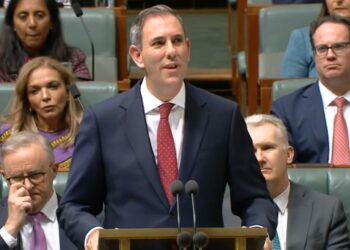In a recent blog post, chair of the Institute of Managed Account Professionals’ regulatory group, Jenny Mulders, said the legal line between “perceived” and “actual” conflicts of interest had been blurred by FASEA’s introduction of the “disinterested person test” in its latest Code of Ethics guidance.
“Conflicts are generally assessed as ‘potential’, ‘perceived’ or ‘actual’. In this and previous guidance, FASEA has suggested that Standard 3 only applies when there is an ‘actual’ conflict,” Ms Mulders said.
However, by suggesting that “if a disinterested person…would reasonably conclude…that the arrangements could induce the adviser to act”, the authority appeared to be describing a perceived conflict in its latest guidance, she said, which would create confusion for advisers needing to apply the code in real-world situations.
“Personal advice is, by definition, peculiar to each individual client. It cannot be assessed in bulk fashion. It must be assessed on a case-by-case and client-by-client basis,” Ms Mulders said.
“Whether an adviser has managed a potential or perceived conflict will be determined on the strength of each client file, in particular the statement of advice.
“An adviser cannot fail Standard 3 in bulk any more than they can comply with Standard 3 in bulk. They need to apply their mind to Standard 3 and the rest of the code every time they provide advice to a client.
“Until we get the wording of Standard 3 more consistent with the well-developed legal standards for managing conflicts of interest, this standard is going to continue to be a real sticking point for the financial services profession.”
Ms Mulders said the current wording of the standard could be used to fail client files in the event of a large-scale file audit, without specific reference to the recommendations an adviser made.
She added that the authority’s guidance had also not yet approached the topic of in-house products, which was specifically relevant to managed accounts and could affect a large number of practices.
The comments come following the news the government would roll FASEA’s standards-setting power into the Treasury, as the authority is set to be scrapped in 2021.
Previous comments from legal practitioners have suggested that wording of the standards could be amended fairly simply if the Treasury chose to do this.




‘How the industry operates…’ surely the misunderstanding is not FASEA’s but those who continue to resist its mandate to change an industry into a profession.
A regulatory requirement that requires a detailed analysis of every client file to find out whether the adviser passed or failed is about as unworkable a requirement I have ever seen. That is a frightening future where every single client could be a breach and you would only know after detailed analysis.
Who thinks this sort of thing up? A vendor of Damocles swords?
The manner in which FASEA handled the Code of Ethics process and the anomalies and confusion it has now created
is unacceptable on every level.
This is clearly a case where the theory of an ideal outcome or process simply cannot be applied en masse.
In addition, despite everything that FASEA has stated , Standard 3 is designed to capture a breach regarding the potential inducement of either a commission payment or asset based fees.
If you read through the 2 submissions from both CHOICE and Dr. Hugh Breakey and Professor Charles Sampford under the heading of “Consumer Representatives” , you will very soon see where the influence regarding the variable income clause in Standard 3 has arisen from.
As FASEA could not be seen as banning these forms of remuneration, they compromised by placing the focus on the proof of a ” disinterested person” being convinced there had been an inducement to act.
Standard 3 is where the consumer groups had their win with the Code of Ethics.
They are not genuine consumer groups. They are political activists. They do not represent the interests of real consumers, and have actually made things worse for most consumers.
I have previously made these comments in another recent IFA article, but I thought it would be worthwhile to repeat them.
It’s about time FASEA was put out of it’s misery. I know he had a challenging task being handed that poison chalice, but CEO Stephen Glenfield (AKA Sergeant Shultz “I see nothing, I hear nothing, I do nothing”) took on the role with eyes wide open. Unfortunately, he hasn’t handled the task very well. A couple of the low lights include his ridiculous decision to get non practitioners (ie academics) to set silly, ambiguous & incomprehensible questions in the exams (come on Stephen, you need to make an admission about that). This produced a bunch of unnecessary anxiety within the industry & has led many to leave (before you say it, I agree their are many in that cohort we are well rid of).
His interpretation of the Standards has set a new low in understanding how the industry works. Particularly the change in Standard 3 he presided over. He continues to slip over in his own vomit trying to make sense of this Standard. Now that FASEA is in the departure lounge (it is well known within industry circles that ASIC despised FASEA), it will be interesting to see how the new body(s) will interpret this mess. I predict more vomit, more slipping.
As Homer Simpson would say: “D’oh!”, with the appropriate forehead slap.
If we were to presented SoAs to clients which looked like this mess, we’d be tarred, feathered & run out of town…and rightly so!
How these comedians get away with this nonsense beggars belief.
Just another fabulous day in financial planning!!
Interesting statements. Is the emesis reference really needed, though?